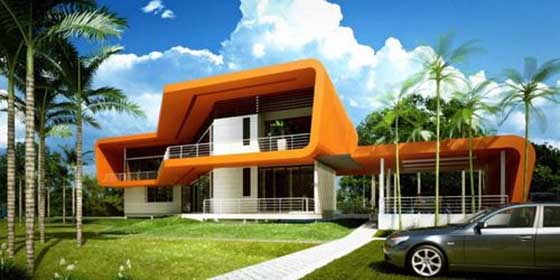Home designs are not just about aesthetics. Indeed, the overall design of the exterior (façade) and the interior of a residential property also take into account the aspects of functionality. However, while most homes do provide that aspect, it is often at the expense of the owners, who have to deal with expenses because of the use of electricity. It may still be important in today’s homes, but in Australia, energy efficiency is being promoted as a way to minimise the growing monthly bill costs. Indeed, newly-built homes in Sydney have also taken into account this very important aspect in their designs.
Energy efficiency is truly an answer to the expected rise in energy prices, which could be definitely hurt the pockets of everyone, including homeowners. In fact, many homes in Australia today are designed and constructed in such a way that would allow homeowners to exercise the saving of energy. Indeed, living in an energy-efficient home has numerous benefits, including the following:
- The ability to keep the home at the best levels of temperature. Homes that are thermally regulated can benefit the elderly, the children, and those who are susceptible to allergies. Between 18 to 24 degrees Celsius, this is the optimal temperature as recommended by the World Health Organization (WHO).
- The ability to decrease homeowners’ energy bills. Many people who are searching for homes in Australia might find it enticing to find one that is designed to allow a wiser use of energy, which would help incur savings in the long run.
- The ability to provide a higher level of comfort. Not only do energy efficiency allow homeowners to reduce their energy costs, but also increase comfort all around the household.
Meanwhile, to further explain the numerous opportunities for choosing a home that is energy efficient, it is worth discussing how certain parts of the home and their respective designs can provide such possibilities. Here are some of them:
- An energy-efficient home has insulation. Any material that curtails the transfer of heat to and from the house may include mineral wool, fiberglass, sheep’s wool, synthetic fibre, and recycled paper that is treated with chemicals to fend off fire, rotting, and rodents. The purpose of insulation is to keep the inside of the house warm for the winter, prevent the entry of heat inside the house during the summer, and, more importantly, diminishes the need to use appliances for heating and cooling. Walls and ceilings are common parts of the home that are fitted with insulation.
- An energy-efficient home takes in light from the sun in strategic places. Apart from the need to install LED and compact fluorescent bulb lighting to lower down the electricity costs, an energy-efficient home focuses on natural light. Indeed, by taking into account window sizes and location, as well as the use of skylights, and glazing and shading, a home is capable of heating and cooling, depending on the season. Natural light must be able to effectively illuminate most of the rooms. Another way to add accent to your home is to have bamboo flooring Sydney. The nature-theme of the design complements the design of your environment-friendly home.
- An energy-efficient home is strategically built in a specific orientation and location that would allow for its natural heating, cooling, and lighting. Obviously, it involves numerous considerations, from how the sun directly impact the home in both summer and winter, the amount and height of foliage, the height and nearness of surrounding establishments, and the size of the block. The overall design of the home and the building materials used contribute to the energy efficiency. Additionally, if you have bamboo flooring Sydney design, the general theme of the home is much more apparent.
Home designs may mostly be conventional, but if you are a planning to choose a home, you might as well consider energy-efficient homes. With everything that is discussed above, you get to reap the benefits of living comfortably, exercising green living, and reducing energy expenditures.
